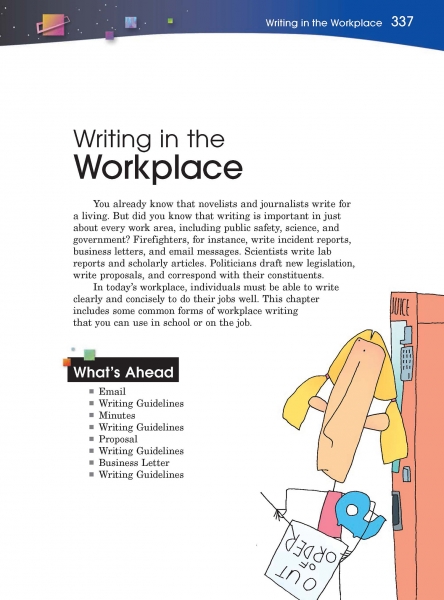Page 337 from

Start-Up Activity
Lead a discussion about writing in the workplace:
-
What do people have to do when they want to apply for a job? (Fill out a job application/write a resume and cover letter.)
-
What do workers do when they need to communicate important information to others? (Write an email, take minutes, or create a proposal.)
So, writing is not only a gateway to employment, it is also one of the main abilities that employees must have to stay employed and get promoted. In this chapter, your students will learn some of the basic forms of business writing.
Think About It
“I do love email. Wherever possible I try to communicate asynchronously. I'm really good at email.”
—Elon Musk

Start-Up Activity
Lead a discussion about writing in the workplace:
-
What do people have to do when they want to apply for a job? (Fill out a job application/write a resume and cover letter.)
-
What do workers do when they need to communicate important information to others? (Write an email, take minutes, or create a proposal.)
So, writing is not only a gateway to employment, it is also one of the main abilities that employees must have to stay employed and get promoted. In this chapter, your students will learn some of the basic forms of business writing.
Think About It
“I do love email. Wherever possible I try to communicate asynchronously. I'm really good at email.”
—Elon Musk